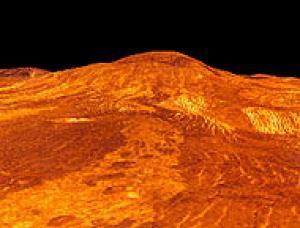
|
| ©JPL, NASA |
| NASA radar image of Venus. |
Venus is a sister planet to Earth. It is nearly the same size and density yet it has a surface temperature of 720 K, an atmosphere dominated by carbon dioxide and no evidence of oceans or ridges. It has been described as "Earth's evil twin".
Dr Huw Davies, of the School of Earth and Ocean Sciences argues that a mega-collision could explain these differences. In particular the collision could explain why the interior of Venus is dry, the odd rotation of the planet and the carbon dioxide atmosphere.
Dr Davies of the School of Earth and Ocean Sciences said: "A collision theory has been explored by scientists previously but was abandoned as the planet Venus has no moon usually expected from such an impact. However, a mega-impact could have created Venus, since the head-on collision I propose does not produce a moon."
The hot ball of gas and liquid that would result immediately following the collision would allow iron to react away the water, leaving Venus a dry planet. Significant suggested consequences of a dry planet include the lack of plate tectonics, continents and life.
Dr Davies' research is published in the journal Earth and Planetary Science Letters.
Adapted from materials provided by Cardiff University.



Reader Comments
to our Newsletter